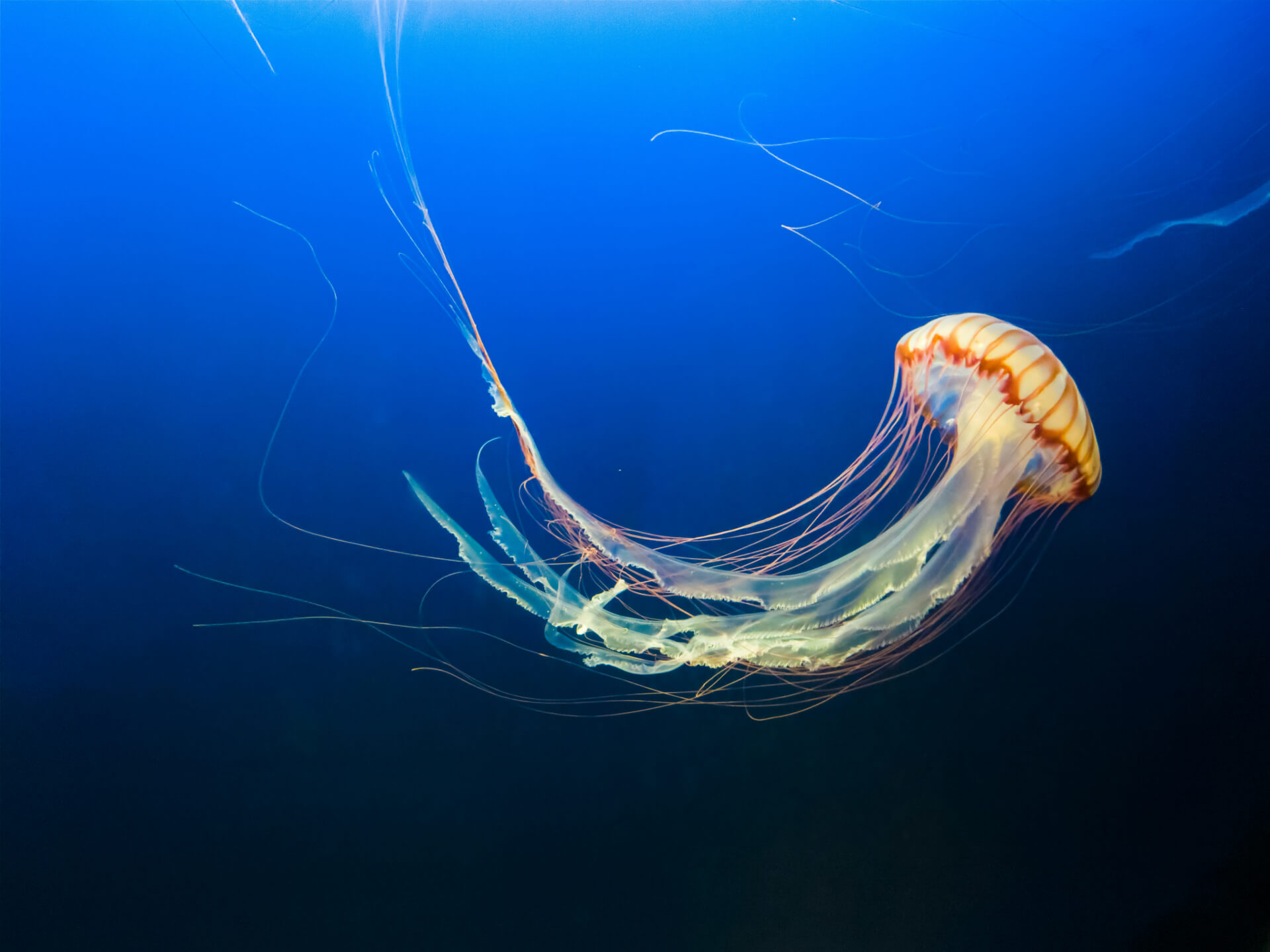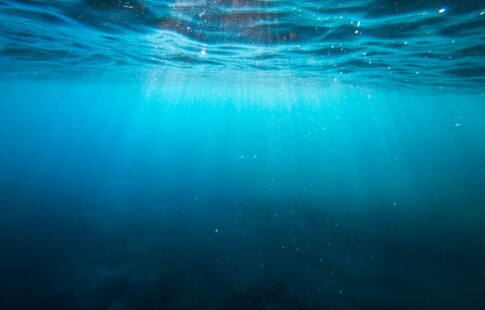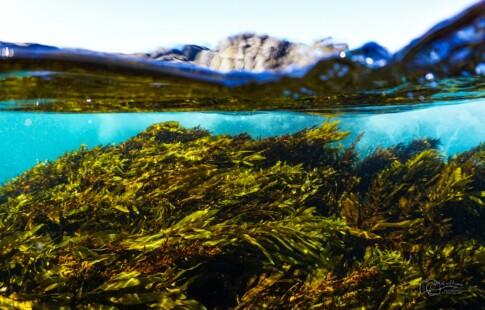
How the Immortal Jellyfish Lives Forever: Life Cycle Questions, Answered
We are reader-supported. When you buy through links on our site, we may earn affiliate commission.
Humans are under the impression that nothing lives forever. While many creatures on this earth live for longer, nothing is immortal — except for maybe one species. The immortal jellyfish’s life cycle is one of the most fascinating phenomena in the ocean. Not only does it seem to defy the laws of nature, but it also combats everything people have learned about other life on Earth. Discover how this species manages to do the impossible.
What Is the Immortal Jellyfish?
The immortal jellyfish, or Turritopsis dohrnii, was discovered over a century ago in the Mediterranean, though its presence extends across the world’s oceans. Typically, they reside in warmer, tropical waters. It was dubbed this because it can regenerate its cells. This allows the jellyfish to reverse its age and cheat death associated with aging.
They have a dome-shaped center like many of their kind, with nearly 100 tentacles. Its most prominent feature in its translucent body is its bright red stomach, typically full of plankton and fish eggs. It also consumes tons of microorganisms you cannot see with the naked eye.
It captures prey like most jellyfish — by using its toxic tentacles. Then, it stings prey and captures them for consumption. It is known for being aggressive despite its size.
They are also known for being prominent hitchhikers, attaching and finding their way on ships to traverse the planet. This could explain why they are in so many oceans.
What Is the Life Cycle of the Immortal Jellyfish?
A fully-grown immortal jellyfish is only four millimeters big, or around 0.1 inches. Thankfully, if it needs to regrow some of itself, it doesn’t have much to create. How do they get to that point?
First, they start as a larva. It spends time growing into a polyp while attached to the ocean floor. Eventually, it separates itself when it hits the medusa stage and starts swimming around. This is considered adulthood. Many jellies die in this stage, but the immortal variety can revert to a polyp if it wants. The capability is called transdifferentiation. It absorbs its tentacles and becomes, effectively, a baby again.
Every time it regrows, which only takes a day or so, it is biologically identical to its previous form. There are no limits to how many times or how often the jellyfish can execute this. It is the only organism on the planet with this function.
What Are the Implications of Researching the Immortal Jellyfish?
Many scientists are intensely curious about this creature because of its regenerative potential. You can imagine how medical experts and even beauty professionals would be interested in something that could literally be anti-aging.
Marine biologists and medical experts alike are observing its potential to help with stem cell research and other medicinal applications. The potential is nearly limitless, especially if humans could somehow find a way to repair damaged cells to a previously healthy state.
Some studies have shown part of the reason why immortal jellyfish can do this in their life cycle. They have double the number of genes to restore and defend DNA.
However, experts explain the dangers of thinking that immortal jellyfish could be the secret to eternal life. Human bodies are very different biologically, meaning what experts learn about their abilities is not one-to-one translatable to human subjects. Therefore, directing efforts to pharmaceutical and stem cell-based applications is more productive than big-picture regeneration.
Ultimately, it is more important to continue researching the species for its sake rather than for the benefit of humanity. It will help people understand more about ocean creatures and their ecology. The uniqueness of its transdifferentiation abilities can only make people question what else is out there with singularly special skills or other species with the function that people have not discovered yet.
Frequently Asked Questions
Here are some of the internet’s most burning questions about this curious creature.
Can the Immortal Jellyfish Live Forever?
As we’ve unpacked, it can revert to previous developmental stages. Theoretically, it could survive for as long as it wants. However, many have died throughout history.
However, this does not make it immune to environmental factors like predators or environmental stresses. If another fish comes and eats it, there is no way its biology could help it. Hypothetically, if the climate crisis changes its habitat beyond recognition, it is hard to tell if it can sustain itself. It could also contract a disease, just like any other living organism.
What Are the Predators of Turritopsis dohrnii?
That might make you wonder what would have a diet that includes this creature. They include, but are not limited to:
- Other jellyfish
- Turtles
- Penguins
- Anemones
- Crustaceans
How Old Is the Oldest Immortal Jellyfish?
A singular jellyfish has not been identified as the longest-living of the species. However, Turritopsis dohrnii was ranked first as the longest-living jellyfish species according to the Guinness Book of World Records in 2015. This shouldn’t be a surprise to anyone!
How Are Jellyfish Alive Without a Brain?
The immortal jellyfish operates similarly to many of its kind. It has a decentralized nerve net that tells its body what to do instead of a brain. These are called rhopalia, and they are fascinating sensory organs that help jellyfish balance and see their surroundings. Other species, like the box jellyfish, have been proven to use this to learn from experience, which was thought impossible in this type of creature.
Do Immoral Jellyfish Sleep?
Even without a brain or heart, jellyfish still need to sleep. Some even sleep upside-down on the ocean floor. Scientists identify this behavior based on the jellyfish’s heart rate, similar to that of humans.
The Immortal Jellyfish Life Cycle, Unpacked
While this jellyfish’s biology may seem mystical, it has abilities unlike any other creature on the planet. It is difficult to imagine, but with most of the ocean remaining unexplored, who knows what explorers could find in the depths in the future. Another organism like the immortal jellyfish may be waiting to blow scientists’ minds again.
Share on
Like what you read? Join other Environment.co readers!
Get the latest updates on our planet by subscribing to the Environment.co newsletter!
About the author

Steve Russell
Steve is the Managing Editor of Environment.co and regularly contributes articles related to wildlife, biodiversity, and recycling. His passions include wildlife photography and bird watching.





